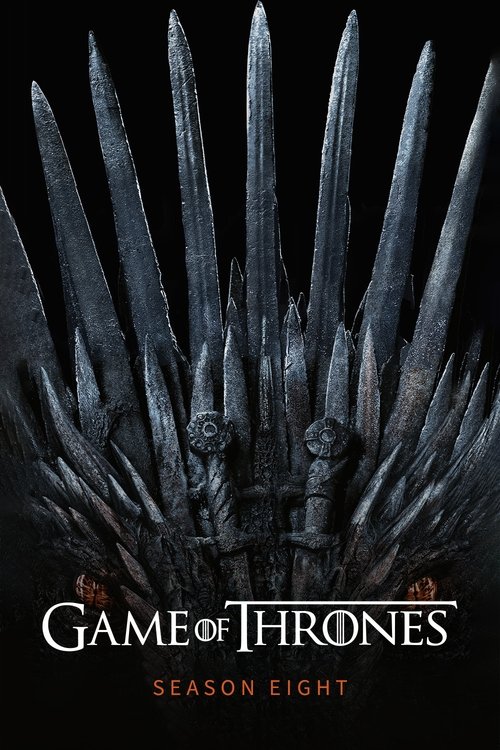
Ask Your Own Question
What is the plot?
The final season of Game of Thrones begins with the episode "Winterfell." The episode opens with Jon Snow and Daenerys Targaryen arriving in Winterfell with their army, including the Unsullied and Dothraki, as well as the dragons, Rhaegal and Viserion. The Northern lords and ladies are wary of Daenerys, and Sansa Stark expresses her concerns about the North's loyalty to a Targaryen. Jon reunites with his Stark siblings, but tensions rise as they discuss the impending threat of the White Walkers.
In Winterfell, Bran Stark reveals to the Stark family that he is now the Three-Eyed Raven and has visions of the Night King. Jon learns from Samwell Tarly that he is actually Aegon Targaryen, the legitimate heir to the Iron Throne, being the son of Rhaegar Targaryen and Lyanna Stark. This revelation shocks Jon, who struggles with the implications of his true parentage and his feelings for Daenerys.
The second episode, "A Knight of the Seven Kingdoms," focuses on the preparations for the battle against the Night King. The Stark family and their allies gather in the Great Hall to share stories and prepare for the fight. Jaime Lannister arrives at Winterfell and is met with hostility, but Brienne of Tarth defends him. Jon and Daenerys share a moment of intimacy, but Jon is still conflicted about his identity. The episode ends with the army of the living preparing for the battle at Winterfell.
In the third episode, "The Long Night," the battle against the Night King begins. The living forces, including the Unsullied, Dothraki, and the Northmen, face the army of the dead. The Dothraki charge into the darkness, but they are quickly overwhelmed. The battle rages on, with many characters fighting valiantly. The living retreat to Winterfell as the dead breach the walls. Arya Stark, after a series of harrowing encounters, ultimately confronts the Night King in the Godswood. In a tense moment, she uses her training to stab him with a Valyrian steel dagger, causing him to shatter and leading to the destruction of the White Walkers and their army.
The fourth episode, "The Last of the Starks," deals with the aftermath of the battle. The living mourn their dead, including Jorah Mormont and Theon Greyjoy. Daenerys is increasingly isolated and feels the weight of her losses. Tensions rise between her and Sansa, as Sansa questions Daenerys' claim to the North. Jon, still grappling with his identity, is torn between his Stark loyalty and his love for Daenerys. The episode culminates in a shocking twist when Euron Greyjoy ambushes Daenerys' fleet, killing Rhaegal and capturing Missandei. Daenerys is devastated and vows to take revenge.
In the fifth episode, "The Bells," Daenerys and her forces march on King's Landing. Tyrion Lannister attempts to negotiate with Cersei Lannister, but she refuses to surrender. Daenerys, fueled by anger and a desire for vengeance, decides to attack the city. As the battle begins, Drogon unleashes fire upon King's Landing, leading to widespread destruction. The Red Keep is breached, and Cersei watches from the tower. In a moment of chaos, the city falls, and Daenerys, consumed by rage, orders the destruction of the city even after the bells of surrender ring. Jaime Lannister attempts to reach Cersei, but he is captured by Euron and later kills him in a confrontation. Cersei and Jaime reunite in the Red Keep, but they are ultimately trapped and die together as the castle collapses.
The final episode, "The Iron Throne," begins with the aftermath of Daenerys' devastating attack on King's Landing. Tyrion confronts Daenerys about the destruction and the loss of innocent lives. He resigns as Hand of the Queen and is imprisoned. Jon, witnessing Daenerys' transformation into a tyrant, struggles with his loyalty and love for her. In a climactic moment, Jon confronts Daenerys in the Throne Room and, after a passionate exchange, he stabs her, killing her. Drogon mourns her death and melts the Iron Throne before flying away with her body.
In the aftermath, the lords and ladies of Westeros gather to decide the fate of the realm. Tyrion suggests a council to elect a new ruler, leading to Bran Stark being chosen as the new king, with Tyrion as his Hand. Sansa Stark declares the North an independent kingdom, becoming its queen. Jon Snow is exiled to the Night's Watch as a compromise to maintain peace. The series concludes with Jon returning to the Wall, Arya setting sail to explore new lands, and Bran ruling from the Iron Throne, marking the end of the long and tumultuous saga of Westeros.
What is the ending?
In the ending of Game of Thrones, Season 8, several key events unfold leading to the resolution of the series. Daenerys Targaryen, after conquering King's Landing, is killed by Jon Snow. Following her death, Bran Stark is chosen as the new king, while Sansa Stark declares the North an independent kingdom. Arya Stark sets off on a journey to explore west of Westeros. Tyrion Lannister is appointed as Hand of the King, and Jon Snow is exiled to the Night's Watch as a compromise for killing Daenerys.
The final episodes of Game of Thrones unfold with a series of dramatic and pivotal moments that shape the fates of its characters and the realm of Westeros.
Scene 1: The Aftermath of King's Landing The episode opens in the charred ruins of King's Landing. Ash and smoke fill the air, and the once-mighty city lies in devastation after Daenerys Targaryen's fiery conquest. The camera pans over the destruction, revealing the bodies of the innocent citizens who perished in the flames. Daenerys stands atop the steps of the Red Keep, a triumphant yet conflicted figure, as she addresses her Unsullied and Dothraki forces, proclaiming her vision of a new world.
Scene 2: Jon Snow's Dilemma Jon Snow, visibly shaken by the destruction and the loss of life, grapples with his loyalty to Daenerys and his moral compass. He witnesses the aftermath and the suffering of the people, which weighs heavily on him. In a private moment, he confides in Tyrion Lannister, who is imprisoned for opposing Daenerys. Tyrion urges Jon to consider the implications of Daenerys's actions and the potential for tyranny.
Scene 3: The Confrontation In a tense and emotional confrontation, Jon seeks out Daenerys in the throne room. The Iron Throne looms behind her, a symbol of power and ambition. Daenerys speaks passionately about her vision for the future, but Jon, torn between love and duty, ultimately decides that her path leads to further destruction. In a heart-wrenching moment, he kisses her before plunging a dagger into her heart, killing her. Daenerys's eyes widen in shock as she falls, and her dragon, Drogon, mourns her loss, melting the Iron Throne in a fit of rage before flying away with her body.
Scene 4: The Aftermath of Daenerys's Death Following Daenerys's death, chaos ensues in King's Landing. The Unsullied and Dothraki are left leaderless, and the power vacuum creates uncertainty. Tyrion is captured and brought before the remaining leaders of Westeros, including Sansa Stark, Arya Stark, and Bran Stark. They convene to discuss the future of the realm.
Scene 5: The Council of Lords and Ladies In a council meeting, the lords and ladies of Westeros gather to decide the fate of the kingdom. Tyrion proposes a new system of governance, suggesting that the leaders should choose their king rather than inherit the throne. After much debate, they elect Bran Stark as the new king, recognizing his wisdom and unique perspective as the Three-Eyed Raven. Bran accepts the role, but with a sense of detachment, as he is no longer the boy he once was.
Scene 6: Sansa's Independence Sansa Stark, asserting her strength and independence, declares that the North will remain a separate kingdom, free from the rule of the Iron Throne. She is crowned Queen in the North, a moment of triumph for her character, who has fought for her family's legacy and the North's autonomy.
Scene 7: Arya's Journey Arya Stark, ever the adventurer, decides to leave Westeros behind. She sets sail on a ship, determined to explore the uncharted lands west of the continent. Her departure symbolizes her quest for identity and freedom, as she seeks to carve her own path away from the shadows of her family's legacy.
Scene 8: Jon's Exile In a bittersweet resolution, Jon Snow is taken prisoner by the Unsullied. To prevent further conflict, a compromise is reached: Jon will be exiled to the Night's Watch, returning to the Wall. He bids farewell to his family, particularly Sansa and Arya, with a heavy heart. As he walks through the gates of Castle Black, he is greeted by the familiar sight of the Wall, a reminder of his duty and sacrifice.
Scene 9: The New Order The final scenes depict the new order in Westeros. Tyrion is appointed as Hand of the King to Bran, tasked with rebuilding the realm. The council of lords and ladies begins to discuss matters of governance, hinting at a more democratic approach to leadership. The camera pans over the Stark siblings, each having found their place in the world, as the series concludes with a sense of both closure and new beginnings.
In the end, the fates of the main characters are sealed: Daenerys is dead, Jon is exiled, Sansa rules the North, Arya embarks on a new adventure, and Bran becomes the king of a fractured but hopeful realm. The story closes on the themes of sacrifice, the complexity of power, and the enduring bonds of family, leaving a lasting impact on the audience.
Is there a post-credit scene?
In "Game of Thrones" Season 8, there is no post-credit scene. The series concludes with the final episode titled "The Iron Throne," which wraps up the storylines of the main characters and the fate of Westeros. The episode ends with a poignant scene that reflects on the aftermath of the war for the Iron Throne, but it does not include any additional scenes or teasers after the credits. The final moments focus on the new leadership of Westeros and the paths chosen by key characters, providing closure to the epic saga without any further hints or scenes beyond the main narrative.
What happens to Daenerys Targaryen in Season 8?
In Season 8, Daenerys Targaryen's arc culminates in a tragic and controversial manner. After the defeat of the Night King and the White Walkers, she becomes increasingly isolated and paranoid, especially after the loss of her dragon, Viserion, and the betrayal by Jon Snow. In the penultimate episode, 'The Bells,' she decides to burn King's Landing despite the city's surrender, leading to mass destruction and civilian casualties. This act of devastation marks a turning point in her character, showcasing her descent into tyranny. In the series finale, 'The Iron Throne,' Jon Snow confronts her about her actions, and in a moment of heartbreak, he kills her to prevent further bloodshed, believing she has become a threat to the realm.
What is Jon Snow's fate in Season 8?
Jon Snow's fate in Season 8 is marked by his internal conflict and ultimate sacrifice. After the battle against the Night King, he grapples with his identity as both a Stark and a Targaryen. His relationship with Daenerys becomes strained as he learns of his true parentage, which complicates his feelings towards her. In the finale, after witnessing Daenerys's tyrannical actions in King's Landing, he realizes that she poses a danger to the realm. In a heart-wrenching moment, he kills her to save Westeros from her rule. Following her death, Jon is taken prisoner by the Unsullied and ultimately exiled to the Night's Watch as a compromise to maintain peace. The season concludes with him returning to the Wall, where he finds solace in the North.
How does Arya Stark's journey conclude in Season 8?
Arya Stark's journey in Season 8 is one of growth and self-discovery. After playing a crucial role in the Battle of Winterfell, where she kills the Night King, Arya is initially filled with a sense of purpose. However, the destruction of King's Landing deeply affects her. Witnessing the horrors of war and the loss of innocent lives, she becomes disillusioned with the idea of vengeance. In the finale, she decides to leave Westeros to explore what lies west of the continent, symbolizing her desire for freedom and a new beginning. Her journey reflects her evolution from a girl seeking revenge to a woman seeking her own path.
What role does Bran Stark play in Season 8?
In Season 8, Bran Stark emerges as a pivotal character, embodying the role of the Three-Eyed Raven. His abilities to see into the past and future provide crucial insights during the war against the Night King. Bran's knowledge of the White Walkers and their origins becomes vital for strategizing the defense of Winterfell. After the battle, he is nominated for the Iron Throne by Tyrion Lannister, leading to a significant shift in power dynamics. In the series finale, Bran is elected as the new king of Westeros, representing a break from the traditional power struggles, as he emphasizes the importance of unity and the lessons learned from the past.
What happens to Cersei Lannister in Season 8?
Cersei Lannister's fate in Season 8 is marked by her relentless pursuit of power and her ultimate downfall. Throughout the season, she remains defiant and manipulative, seeking to maintain her grip on the Iron Throne. In 'The Bells,' she orders the destruction of King's Landing's defenses, believing she can withstand any attack. However, her plans unravel when Daenerys unleashes her dragon, Drogon, on the city. In the chaos, Cersei and Jaime Lannister attempt to escape but are trapped in the Red Keep as the castle crumbles around them. Their final moments are filled with despair as they embrace, ultimately dying together in the ruins, symbolizing the tragic end of their tumultuous relationship and Cersei's ambition.
Is this family friendly?
"Game of Thrones" Season 8 contains several elements that may not be suitable for children or sensitive viewers. Here are some potentially objectionable or upsetting aspects:
-
Graphic Violence: The season features intense battle scenes with significant bloodshed, including deaths of major characters in brutal ways.
-
Death and Loss: Characters face tragic deaths, which can evoke strong emotional responses. The impact of loss is a recurring theme.
-
Sexual Content: There are scenes that include nudity and sexual situations, which may be inappropriate for younger audiences.
-
Themes of Betrayal and Power Struggles: The narrative explores dark themes such as betrayal, ambition, and the moral complexities of power, which may be distressing.
-
Emotional Turmoil: Characters experience profound grief, fear, and despair, which can be heavy and unsettling.
-
Supernatural Elements: The presence of undead creatures and dark magic may be frightening for some viewers.
These elements contribute to the overall mature tone of the series, making it more suitable for adult audiences.

























